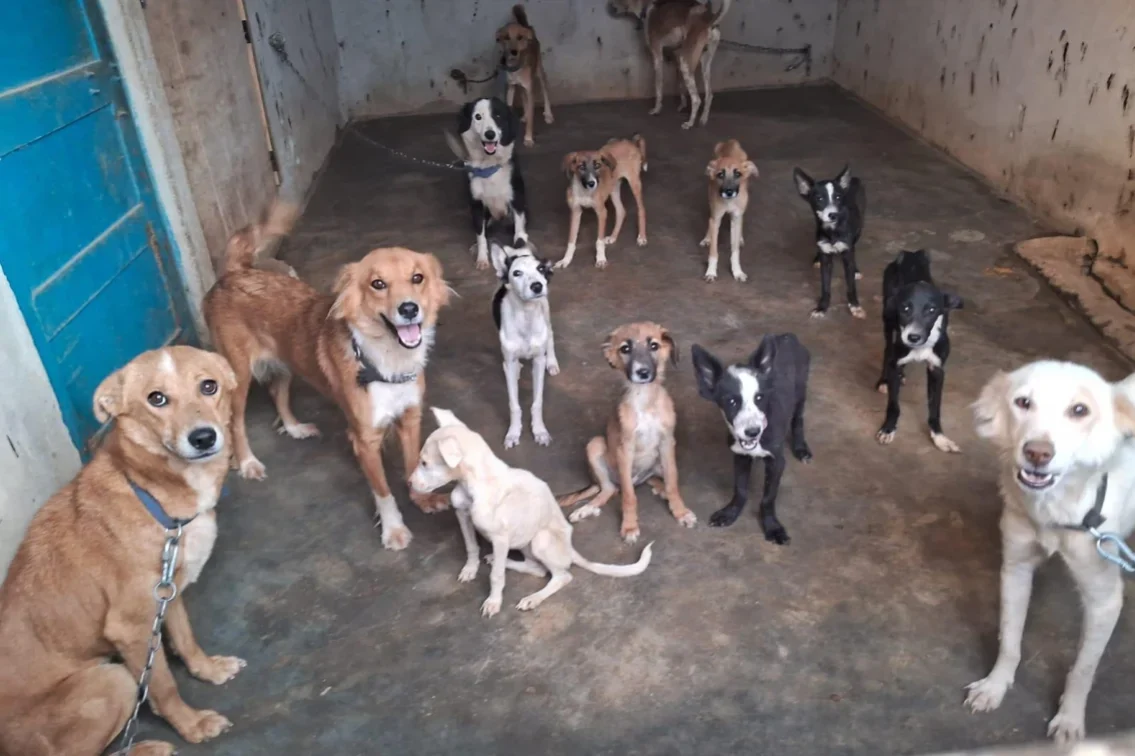What is canine distemper (CD)?
Canine distemper, or distemper disease in dogs, is a dangerous and contagious disease that is caused by a toxic virus similar to measles. Distemper does not just affect canines – it could also affect many other mammals including big cats, raccoons, and so on.
How do dogs get canine distemper?
Distemper is dangerous precisely because it is so contagious – and it can be passed just through air. Puppies and dogs can spread distemper to each other through coughing or sneezing. Sharing a water bowl is also a cause of spread.
Distemper can also be sexually transmitted from dog to dog as well – mostly because of close interaction with the virus.
Critical things to know about canine distemper
● It is one of the most frequent killers of stray and pet dogs and fatality is very high.
● It is deadly and very common. You might miss a rabies shot but don’t miss one for distemper.
● The first line of defence for any dog is a vaccination.
● If you suspect this disease, get to a vet that will give distemper treatment quickly.
● Don’t let your vet determine by ‘examination’ and ‘guess work’ – the dog has to take a test.
● Isolation of the dog and aggressive treatment are critical for the dog. Don’t let someone else take the responsibility for it – it’s your dog! Now read on.
Did You Know?
VOSD has given 250,000+ state-of-the-art free treatments, and we continue to provide hundreds of treatments every day across India – You can also help us by sponsoring treatment for a Rescued Street Dog! – click to know more
Which dogs are more prone to canine distemper?
Puppies are more prone to canine distemper than other dogs. This is because they may not have been vaccinated yet. Stray dogs that have not received their shots are also likely to suffer from distemper. Female dogs that have distemper can easily pass it on to their unborn puppies.
When to see a vet?
If you notice the first symptoms of distemper as mentioned below, it is important to take the dog to a veterinarian before further contagion.
Symptoms & spread of disease
Canine distemper belongs to the Morbillivirus class of viruses and is a relative of the measles virus. Canine distemper is highly contagious and is carried airborne and via touch. It has no known cure. Unvaccinated puppies and non-immunized older dogs tend to be more susceptible to the disease.
The virus spreads through the air and by direct or indirect contact with an infected animal (i.e. utensils, bedding).
Week 1: Symptoms appear as ‘common cold for the dog’ as virus attacks a dog’s tonsils and lymph nodes and replicates itself there for about one week.
Week 2: The virus then attacks the respiratory, urogenital, gastrointestinal, and nervous systems.
● Symptoms include high fever (≥103.5 ° F, or 39.7° C), reddened eyes, and a watery discharge from the nose and eyes. This is the ‘tell-tale’ sign of distemper. The ‘distemper twitch’ is a much later sign and by that time it’s probably too late and/or the dog has survived distemper
● The dog is lethargic and reduces or stops eating and becomes anorexic.
● Persistent coughing, vomiting, and diarrhoea may also occur.
● There might be nasal discharge, which could be a cold or flu, but can sometimes be a symptom of distemper.
Week 3/4: The virus starts attacking the other systems of the dog’s body, particularly the nervous system. The brain and spinal cord are affected and the dog may start having fits, seizures, paralysis, and attacks of hysteria. Death may result in two to five weeks after the initial infection. [1] If the dog survives this stage on its own immunity this is when the ‘twitch’ shows.
Preventing distemper
The best measure to take to prevent distemper disease in dogs is by vaccinating the dog.
● Dose ’0′: If the dog is less than 40 days old give it a vaccination called ‘PuppyDP’. Each day delayed exposes the puppy more
● Dose ’1′: For puppies > 40 days old and if they have had, or not had Puppy DP – they need to get the 1st dose of the DLHPPi ( 7-in-1 / 8-in-1/ 9-in-1) vaccine. This is the 1st dose.
● Dose ’2′: 2nd dose of DLHPPi 1 month from dose ’1′
● Dose ’3′: 3rd dose of DLHPPi 1 month from Dose ’2′
● Thereafter 1 booster dose every 1 year.
● If you have an adult dog you repeat steps 5 and 6
As the virus attacks bacterial infections of the respiratory and gastrointestinal systems increase the dogs vulnerability. High dosage of antibiotics is required to counteract that.
Diagnosis & treatment
Vaccinate your dog when it is a puppy. Young puppies are more susceptible to canine distemper, especially if they have not received their shots. If the mother has not been vaccinated, a puppy is very likely to suffer from distemper even before 7 weeks of age.
As soon as you suspect canine distemper take the dog to a vet.
Their first act should be to run a diagnostic test using a Distemper test kit. This is a biochemical strip test and uses body secretions.
If the test shows distemper, the doctor will prescribe isolation and a line of treatment (2 to 3 times a day). Do NOT miss ANY fluid and antibiotic treatment. Not one. Your dog is fighting a losing battle and you’re the only chance he’s got.
Following treatments and combinations are used.
● Administration of CanGlobe C – a Distemper Immunoglobin (Day 0, repeat on Day 3)
● Immediate administration of an experimental ‘distemper serum (antibodies from a distemper survivor are collected from blood in a centrifuge), alternately
● Blood Transfusion from a Distemper survivor is known to deliver results
● Homeopathic treatment after Day 2/3
Further management
A dog’s chances of surviving Distemper will depend on the strain of the virus and the strength of the dog’s immune system. Fully recovered dogs do not spread or carry the virus. Ask a vet free online now!
The information contained in VOSD Vet Advice™ is not intended nor implied to be a substitute for professional medical action which is provided by your vet. You assume full responsibility for how you choose to use this information. For any emergency situation related to a dog’s health, please visit the nearest veterinary clinic.
Frequently Asked Questions (FAQ)
1. Is distemper painful for dogs?
Distemper is the sister virus of measles and has no known cure. A canine distemper vaccine is recommended for newborn puppies and stray dogs since they are the most susceptible to this virus. If the distemper vaccine is not given to dogs as recommended by a vet, it can ruin the respiratory organs and finally affect the nervous system.
The first sign of a dog suffering from distemper is the common cold. If it persists for more than a week, it can take the form of watery or red eyes, a runny nose and slowly move on to diarrhea and vomiting. More severe stages include difficulty in breathing, wheezing cough and seizures, and fits in dogs.
2. How long does canine distemper last?
Canine distemper can last in dogs for 5-6 weeks from the first sign of infection. If you haven’t given your pet the required distemper shots and notice that he or she is suffering from a common cold, rush to a vet immediately.
You will be recommended to make your dog undergo a distemper test which will determine whether he is infected or not. If the result is positive, the veterinarian will recommend isolation, along with medicines to treat your dog.
3. How is canine distemper diagnosed?
Canine distemper is usually airborne but can also spread from touch, from one mammal to another. The first telltale sign of this disease is the common cold. If you notice your dog has a cold and is late on its distemper shots, he or she needs to be immediately taken to the vet.
Following the common cold, runny nose, watery eyes and even difficulty in breathing can be noticed in your pet. If the disease persists, it can take the form of high fever and also cause a wheezing cough accompanied by diarrhea and mucus. Lastly, it will take over the nervous system causing your dog to have fits and seizures, and ultimately a painful death.
Most veterinarians recommend you to undertake canine distemper treatment for your dog right from the moment when he/she is a puppy. If you notice similar symptoms in the strays of your neighborhood, you must arrange or bring them for distemper shots as well.
4. How do dogs act with distemper?
Suffering from distemper can be very stressful for dogs. From having a mild cold to suffering from severe symptoms like a wheezing cough, vomiting, and diarrhea, distemper in dogs has no cure and hence vaccination is essential.
If your dog is suffering from distemper, you will notice him or her slowing down while walking or running. There will be a loss of appetite accompanied by tiredness. Your dog can also become anorexic if medical help isn’t provided during the earlier stages. Consult a doctor as soon as possible to help your dog fight through this disease.
5. Can a dog recover from canine distemper?
As a pet owner, there are moments when you wonder about how to treat canine distemper especially if your dog is showing early symptoms of this disease. Canine distemper is an airborne disease that is quite similar to measles.
To prevent the disease from spreading and taking over all the organs of the body, doctors recommended vaccinating your pets right from the time they are puppies. The dosage is followed every few months and then every year so that your dog lives a healthy life.
If your dog shows symptoms of canine distemper, rush him or her to a vet immediately. After conducting a distemper patch test, the vet will recommend isolation alongside medicines and a proper diet. If your dog is at a crucial stage, blood transfusion from a distemper survivor can also deliver beneficial results.





